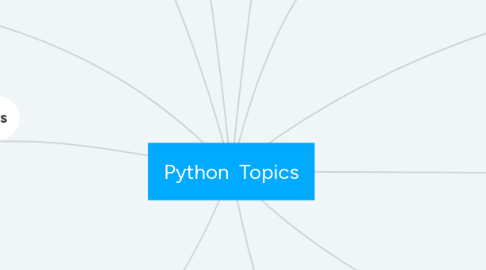
1. 5. Included in all topics
1.1. 5.1. Development enviroment
1.1.1. 5.1.2. Jupyter Notebooks
1.1.2. 5.1.1. The intepretor
1.2. 5.2. Python execution enviroment
1.2.1. 5.2.1. Difference between a compiled language and a scripting language
1.2.1.1. 5.2.2.1. read-evaluate-print-loop (REPL)
1.2.2. 5.2.2. How is a python program executed
1.2.3. 5.2.3. Virtual environments
1.2.3.1. 5.2.3.1. Jupyter Notebooks
1.3. 5.3. Conditions
1.3.1. 5.3.1. if / Else/ elif
1.3.2. 5.3.2. switch
1.3.2.1. 5.3.2.1. dictionary
1.4. 5.4. loops
1.4.1. 5.4.1. for
1.4.2. 5.4.2. foreach
1.4.3. 5.4.3. while
2. 8. Generators
2.1. 8.1. Generator expressions
2.2. 8.3. Generator functions
2.3. 8.2. Iterator Class
3. 9. Decorators
3.1. 9.1. Higher order decorators
3.1.1. 9.1.1. Decorators with parameters
3.2. 9.2. simple decorators
3.3. 9.3. inner functions
3.4. 9.4. contectlib
4. 10. Functions
4.1. 10.1. lambda
4.2. 10.2. Build in
4.2.1. 10.2.1. Implementation / protocol
4.3. 10.3. Define & use
4.4. 10.4. Decorators
4.5. 10.5. Higher-order function / first classs citizens
4.5.1. 10.5.1. function as parameter
4.5.2. 10.5.2. function as return type
5. 11. Context Manaagers
5.1. 11.1. with
5.2. 11.2. Protocol
5.3. 11.3. contextlib
5.3.1. 11.3.1. @contextmanager
5.3.2. 11.3.2. ContextDecorator
6. 1. Types/Datastructures
6.1. 1.1. Simple Types
6.1.1. 1.1.1. String
6.1.2. 1.1.2. Boolean
6.1.3. 1.1.3. Numbers
6.1.3.1. 1.1.3.1. Arithmetic
6.2. 1.2. List
6.2.1. 1.2.1. Sorting
6.2.1.1. 1.2.1.1. key functions
6.2.1.1.1. 1.2.1.1.1. lambda
6.2.1.1.2. 1.2.1.1.2. built- in
6.2.1.1.3. 1.2.1.1.3. custom
6.2.2. 1.2.2. Comprehensions
6.3. 1.3. Tuples
6.4. 1.4. Set
6.4.1. 1.4.1. Comprehensions
6.5. 1.5. Dict's
6.5.1. 1.5.1. Comprehensions
6.6. 1.6. Special Types
6.6.1. 1.6.1. JSON
6.7. 1.7. Imutable vs mutable
7. 2. IO
7.1. 2.1. Files
7.1.1. 2.1.1. csv
7.1.2. 2.1.2. Text
7.1.3. 2.1.3. JSON
7.1.4. 2.1.4. DB
7.1.4.1. 2.1.4.1. SQlite
7.2. 2.2. Network
7.2.1. 2.2.1. requests
7.3. 2.3. Context Managers
8. 3. Pythonic OOP
8.1. 3.1. Classes
8.2. 3.2. Objects
8.3. 3.3. Inheritance
8.4. 3.4. Encapsulation
8.4.1. 3.4.1. Properties
9. 4. Module
9.1. 4.1. import
9.1.1. 4.1.1. Build-in
9.1.2. 4.1.2. own modules
9.1.3. 4.1.3. 3rd party
9.2. 4.2. __name__ attribute
9.3. 4.3. Virtual enviroments
9.3.1. 4.3.1. requirements.txt
